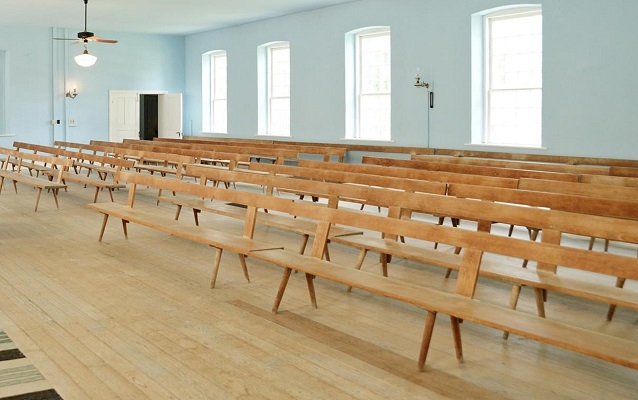Last updated: December 18, 2017
Place
Community Church Museum

Photo courtesy of Amana Heritage Society
The Homestead Church, founded by the Community of True Inspiration, was built in 1865 of locally made brick. It originally consisted of a Saal (meeting hall) that occupied a long middle section, with living quarters for community members on both ends. Two sets of doors on opposite ends of the building allowed men and women to enter separately and access their seats on the opposite ends of the Saal.
Except for their size, Inspirationist churches were largely indistinguishable from residences, although unlike homes, they were never built of wood. The stone or brick churches resembled elongated houses and each village had a main church building which was the principal place of worship. Some residences, however, often had special church rooms that were used for daily prayers. Each church building was furnished with plain benches of scrubbed pine that took on a bleached appearance. Walls and ceilings were painted blue - as they were in residences. The presiding elders sat facing the congregation on plain benches and a simple table held a lamp and the necessary books for worship and song. Men and women sat on opposite sides of the room and the room was always divided by a center aisle which was parallel to the two shorter side walls of the church. In several villages a press house used in making wine was built near the Church; wine was then stored in the church cellar.
According to the 1891 account of Perkins and Wick, "The meeting-houses are long and narrow; within, everything is simple--no pictures, no golden candlesticks, no cushioned pews." The unadorned surroundings were symbolic of the Inspirationists' approach to their faith. They taught a plain system of theology rather than the scholastic theology that reigned in German universities.
The church is alive today under the name of the Amana Church Society. The Homestead Church is now operated by the Amana Heritage Society as a museum.
